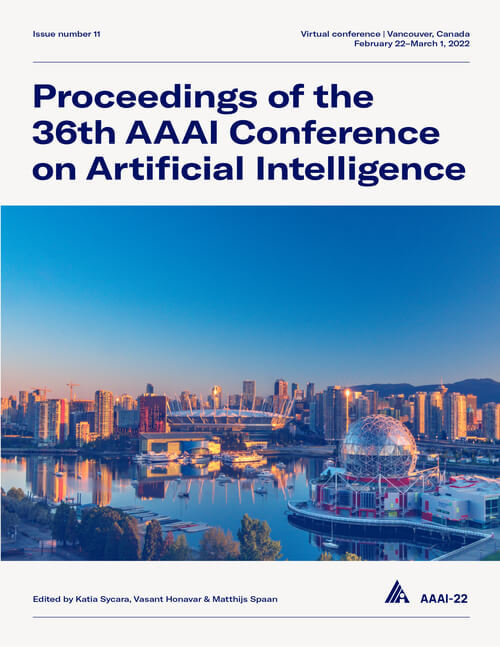A Unified Framework for Real Time Motion Completion
DOI:
https://doi.org/10.1609/aaai.v36i4.20368Keywords:
Domain(s) Of Application (APP), Machine Learning (ML)Abstract
Motion completion, as a challenging and fundamental problem, is of great significance in film and game applications. For different motion completion application scenarios (in-betweening, in-filling, and blending), most previous methods deal with the completion problems with case-by-case methodology designs. In this work, we propose a simple but effective method to solve multiple motion completion problems under a unified framework and achieves a new state-of-the-art accuracy on LaFAN1 (+17% better than previous sota) under multiple evaluation settings. Inspired by the recent great success of self-attention-based transformer models, we consider the completion as a sequence-to-sequence prediction problem. Our method consists of three modules - a standard transformer encoder with self-attention that learns long-range dependencies of input motions, a trainable mixture embedding module that models temporal information and encodes different key-frame combinations in a unified form, and a new motion perceptual loss for better capturing high-frequency movements. Our method can predict multiple missing frames within a single forward propagation in real-time and get rid of the post-processing requirement. We also introduce a novel large-scale dance movement dataset for exploring the scaling capability of our method and its effectiveness in complex motion applications.Downloads
Published
2022-06-28
How to Cite
Duan, Y., Lin, Y., Zou, Z., Yuan, Y., Qian, Z., & Zhang, B. (2022). A Unified Framework for Real Time Motion Completion. Proceedings of the AAAI Conference on Artificial Intelligence, 36(4), 4459-4467. https://doi.org/10.1609/aaai.v36i4.20368
Issue
Section
AAAI Technical Track on Domain(s) Of Application

